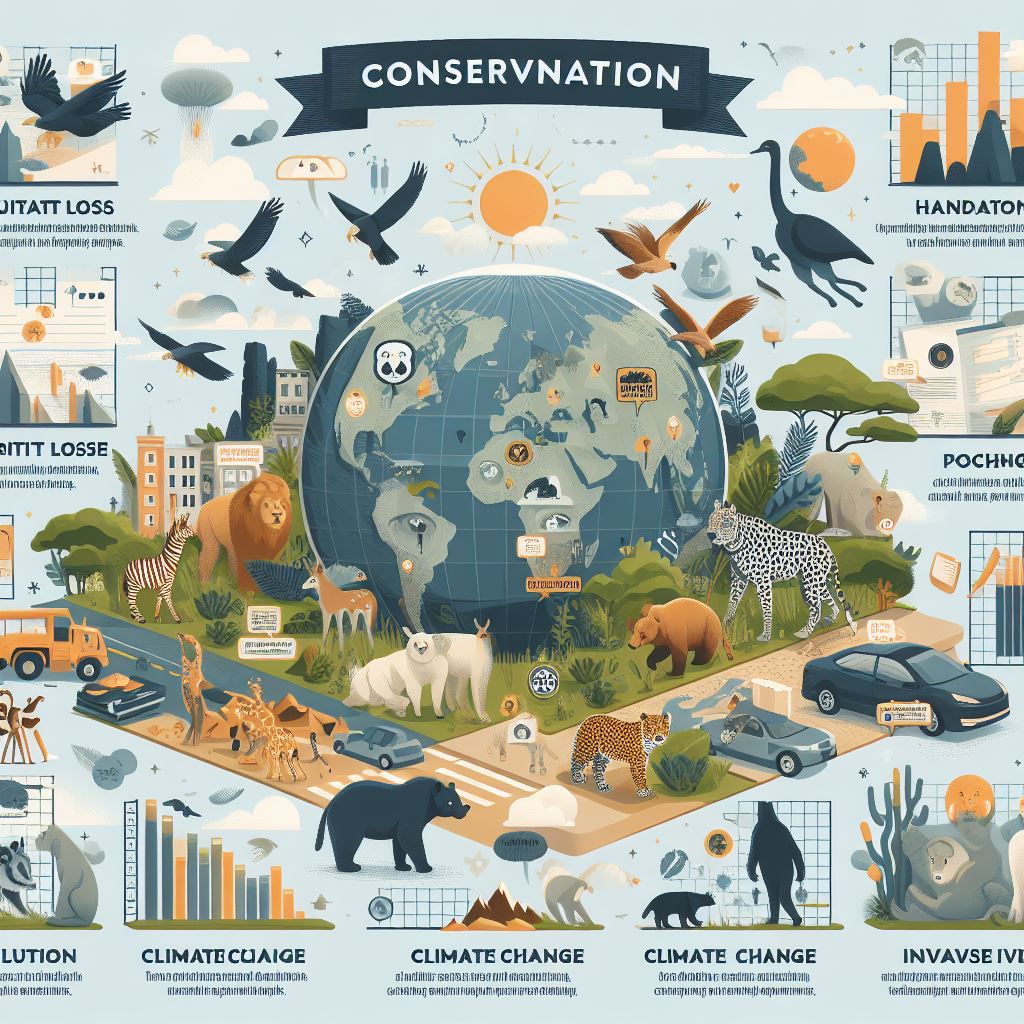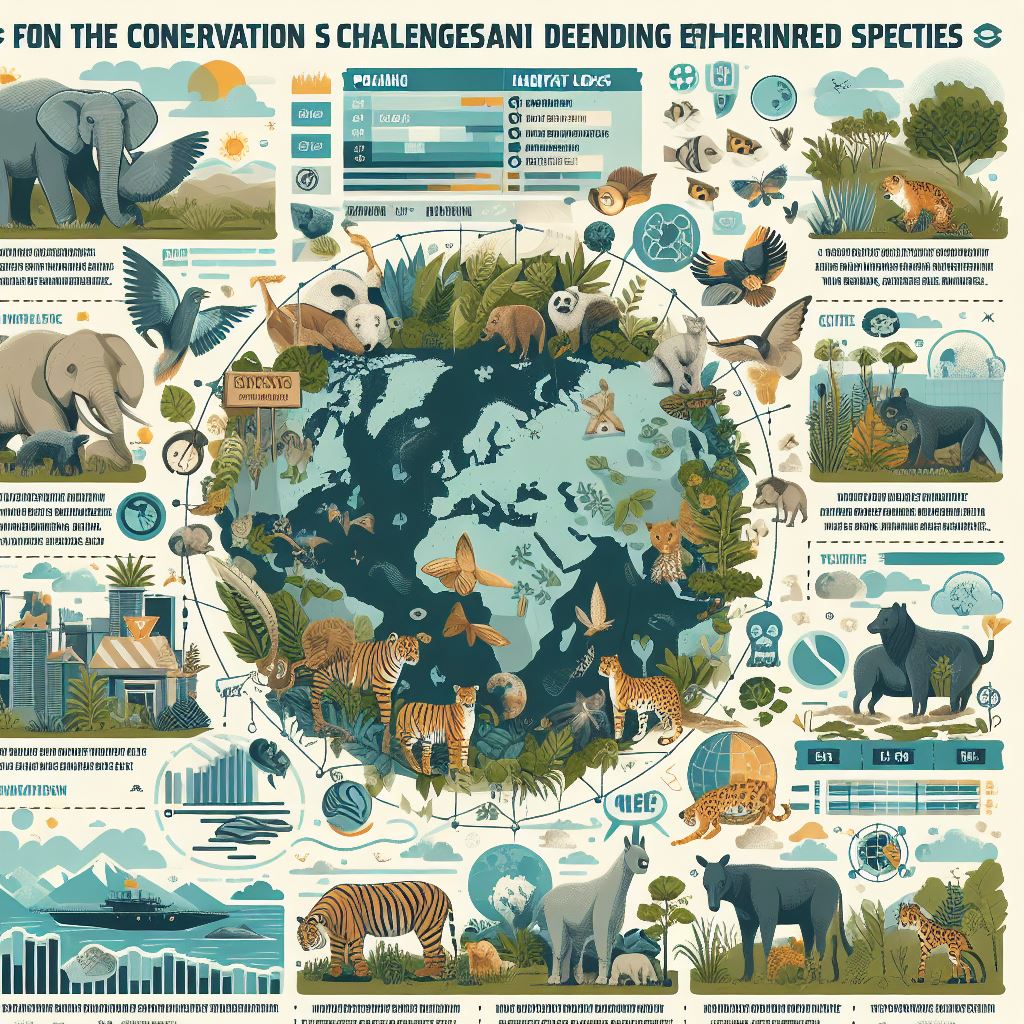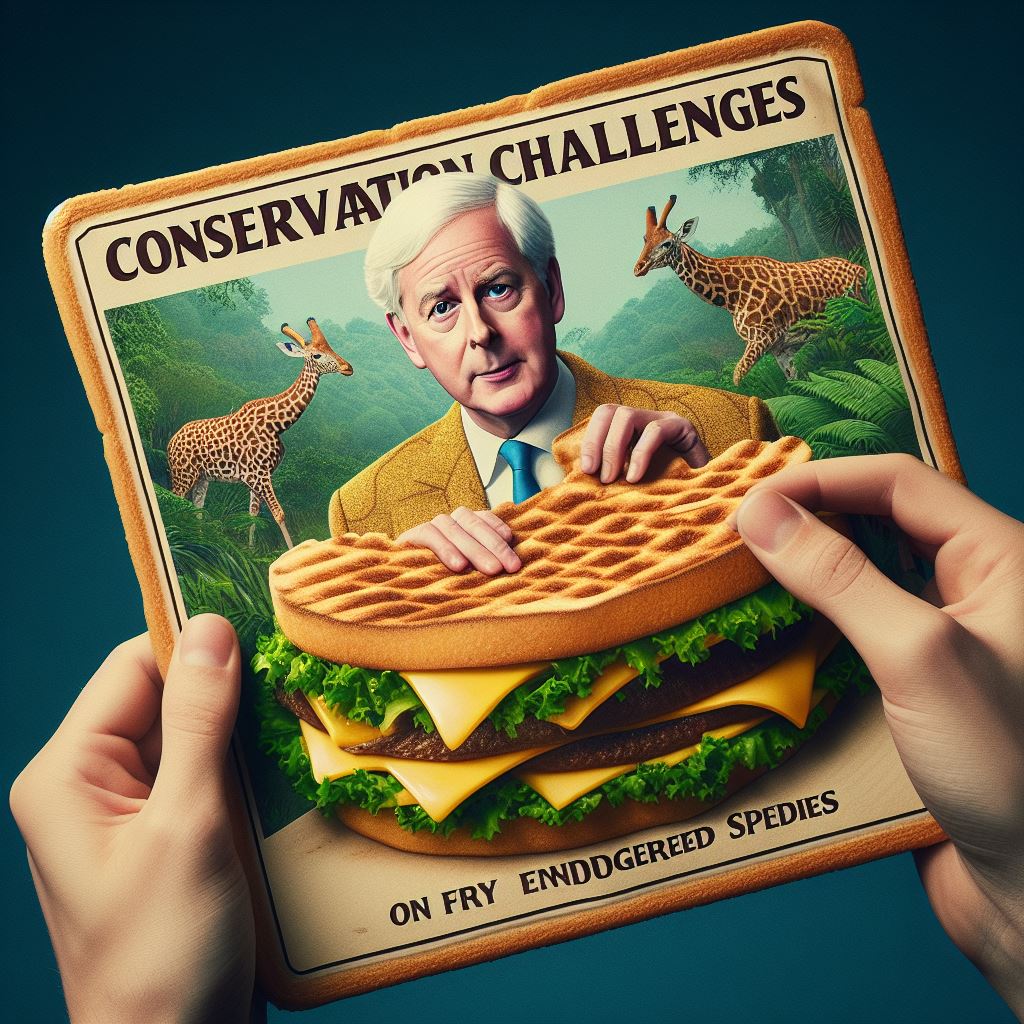Introduction
The concept of endangered species serves as a stark reminder of the intricate web of life on Earth and the fragile balance that sustains it. As human activities continue to reshape the planet, numerous species find themselves on the precipice of extinction. The challenges they face are vast and multifaceted, encompassing issues like habitat loss, climate change, poaching, pollution, and invasive species. In this exploration, we will delve into the current challenges confronting endangered species, examine successful case studies in conservation, and propose solutions to improve the prospects of these vulnerable populations.
Current Challenges Faced by Endangered Species

1. Habitat Loss and Fragmentation
The relentless expansion of human civilization and industry has led to the widespread destruction and fragmentation of natural habitats, leaving endangered species with limited spaces to thrive. This challenge is particularly acute in biodiversity hotspots like the Amazon rainforest, where deforestation for agriculture and logging has reached alarming levels. As habitats shrink, species face increased competition for resources and reduced opportunities for reproduction, pushing them closer to the brink of extinction.
2. Climate Change
The global phenomenon of climate change poses a significant and growing threat to biodiversity. Temperature shifts, altered precipitation patterns, and rising sea levels disrupt ecosystems and force species to adapt rapidly. Polar bears, for example, face diminishing ice cover, impacting their hunting grounds and ability to find food. The interconnectedness of ecosystems means that even slight climate variations can have cascading effects, amplifying the challenges faced by endangered species.
3. Poaching and Illegal Wildlife Trade
The illegal trade in wildlife remains a critical factor driving many species towards extinction. Animals such as rhinos, elephants, and tigers are targeted for their body parts, which are highly valued in traditional medicine and as luxury goods. Despite international efforts to combat poaching, the demand persists, fueled by a complex interplay of cultural beliefs, poverty, and organized crime. As a result, many species continue to face the threat of being hunted to the brink of extinction.
4. Pollution
Pollution, in various forms, poses a pervasive threat to endangered species. Plastic debris in oceans, industrial pollutants in the air and water, and agricultural runoff all contribute to the degradation of ecosystems. For marine species, ingestion of plastic is a particularly insidious threat. Marine turtles, for example, often mistake plastic bags for jellyfish, leading to ingestion and, in some cases, death. Pollution exacerbates existing challenges, weakening species already struggling to adapt to changing conditions.
5. Invasive Species
The introduction of non-native species into new environments can have disastrous consequences for local flora and fauna. Invasive species often outcompete native counterparts for resources, disrupt food chains, and introduce new diseases. The impact is felt across ecosystems, exacerbating the challenges faced by endangered species. Preventing the introduction of invasive species and managing existing populations is a crucial aspect of conservation efforts.
Case Studies of Successful Conservation Efforts

The Giant Panda: A Symbol of Hope
The giant panda, native to China, was once a symbol of endangered species perilously close to extinction. The primary threats included habitat loss due to deforestation and human encroachment. However, concerted conservation efforts, including habitat restoration initiatives and captive breeding programs, have led to a positive change. The giant panda’s status was downgraded from “endangered” to “vulnerable” in 2016, offering a glimmer of hope and illustrating the potential for conservation interventions to yield positive results.
The California Condor: Soaring Back from the Brink
The California condor faced imminent extinction due to lead poisoning from ingesting spent lead ammunition and microtrash, as well as habitat destruction. Intensive conservation measures, including captive breeding programs and a meticulous release strategy, have brought the condor back from the brink. While still critically endangered, the population has increased, highlighting the potential for human intervention to reverse the decline of species.
The Black-Footed Ferret: A Story of Tenacity
The black-footed ferret, North America’s only native ferret species, faced extinction primarily due to the decline of its main prey, prairie dogs, and the outbreak of disease. Through innovative captive breeding programs and reintroduction efforts, the black-footed ferret has experienced a modest recovery. This case underscores the importance of addressing both direct threats and underlying ecological imbalances in successful conservation initiatives.
Proposed Solutions for Improving Conservation Outcomes

1. Preserving and Restoring Habitats
Addressing the root cause of habitat loss is paramount for the conservation of endangered species. This involves the creation and maintenance of protected areas, the establishment of wildlife corridors to connect fragmented habitats, and the promotion of sustainable land-use practices. Collaboration between governments, conservation organizations, and local communities is essential for the success of habitat preservation and restoration efforts.
2. Climate Change Mitigation and Adaptation
Efforts to combat climate change must be an integral part of conservation strategies. This requires international cooperation to reduce greenhouse gas emissions and implement adaptive measures. Conservationists should work in tandem with policymakers, scientists, and local communities to develop and implement resilient conservation plans that account for the changing climate and its impacts on endangered species.
3. Anti-Poaching Measures and Combatting Illegal Wildlife Trade
Combating poaching and illegal wildlife trade demands a comprehensive approach. Strengthening law enforcement, increasing penalties for offenders, and deploying advanced monitoring technologies are crucial components. Additionally, addressing the root causes of demand, such as cultural beliefs and economic incentives, is essential. Public awareness campaigns and community engagement can play a pivotal role in changing attitudes toward the consumption of endangered species’ products.
4. Pollution Control and Environmental Education
To address pollution, stringent regulations on waste disposal and resource extraction are necessary. Public awareness campaigns can educate communities about the environmental impact of pollution and encourage sustainable practices. Implementing recycling programs, reducing plastic use, and advocating for clean energy sources contribute to a healthier environment for endangered species.
5. Invasive Species Management
Preventing the introduction of invasive species and managing existing populations are essential for safeguarding endangered species. Strict biosecurity measures, early detection systems, and rapid response plans can help mitigate the impact of invasive species. Additionally, research into alternative methods for controlling invasive species, such as biological controls, can provide sustainable solutions.
Conclusion
The conservation of endangered species is a complex and challenging endeavor that requires global collaboration and innovative solutions. The success stories of species like the giant panda, California condor, and black-footed ferret demonstrate that with dedication, innovation, and international cooperation, we can make strides in reversing the decline of endangered species. By addressing the root causes of threats, preserving habitats, and engaging communities, we can build a future where endangered species not only survive but thrive in harmony with the ecosystems that sustain us all. The path to conservation success is fraught with obstacles, but it is a journey we must undertake for the well-being of our planet and the myriad species that call it home.




